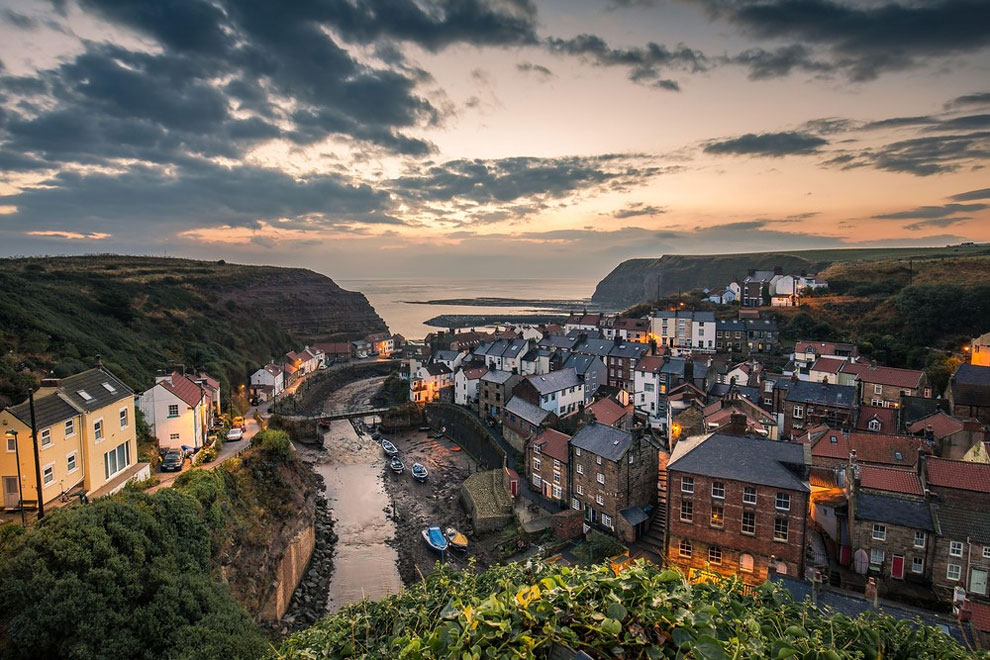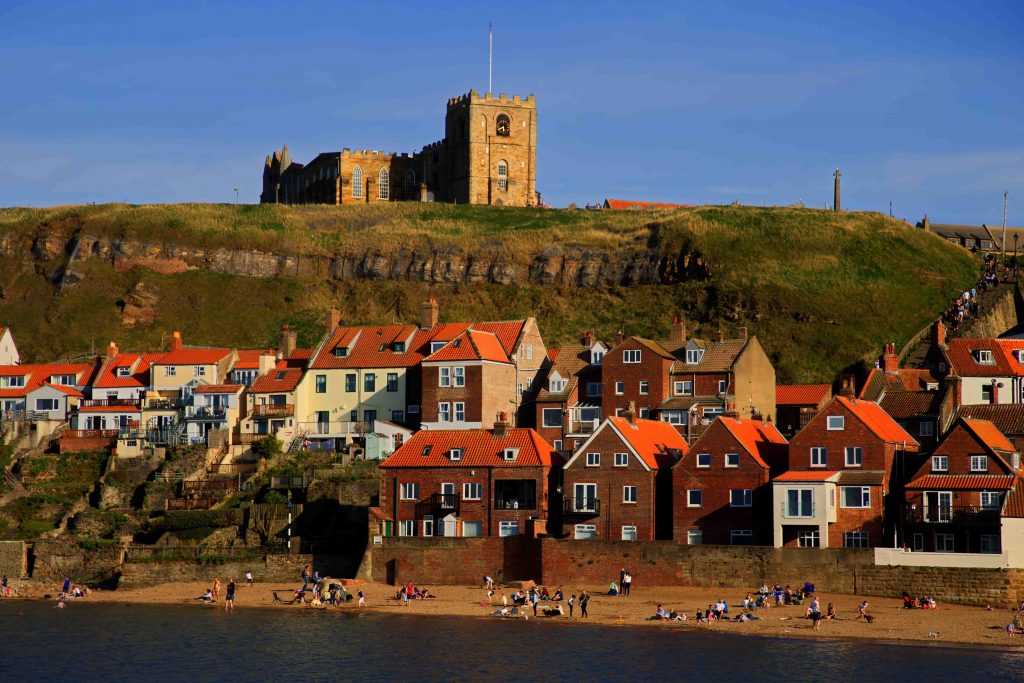Yorkshire, England – where is and what to see
Yorkshire is one of the oldest counties in England and the largest. It is divided into four counties (North Yorkshire, South Yorkshire, West Yorkshire and East Yorkshire) which retain a wide variety of cultural traditions. It is one of the most popular places in the UK and is home to some of the country’s most important and interesting landmarks. The people of Yorkshire are simple, friendly people who were born and raised in the beautiful moors of North York and the Yorkshire Dales, in picturesque historic towns and charming villages.
1. Travel information: useful information
Population: 5,288,200
Capital: York
Languages: English
Local currency: British Pound Sterling () / Exchange Rate: EUR 1.00 = £0.90.
Climate: Oceanic, with rather cold and rainy winters and mild and relatively rainy summers. The average temperature in January is 3.9 °, in July – 16.7 °.
Distance from Italy: 1691.60 km (3 hour flight) from Rome to Leeds
Travel/health insurance: recommended.
2. Where is it and how to get there
Yorkshire is a historic county of England, located in the north-central part of the country, between the Pennines and the North Sea. It is divided into four provinces: North Yorkshire, South Yorkshire, West Yorkshire and East Yorkshire.

The most convenient airport is Leeds, but a good alternative is Manchester Airport, which is only 127 km from York and is connected to it by direct trains (2 hours, from €43.60). A third option is to land in London and then take a train to York from London King’s Cross (about 2 hours, from €104.61).
3. Major cities
York: A strategic location for discovering England’s Roman and medieval origins, the capital and heart of Yorkshire (to which it gives its name), is surrounded by national parks and charming castles. It is an excellent base from which to explore the swampy landscapes of the North York Mores and Whitby.
Leeds: Not a popular tourist destination, but easily accessible thanks to its international airport, making it a good base from which to explore the rest of the county.
Sheffield: Once an industrial capital, today it is one of the new protagonists in the artistic and cultural scene of the United Kingdom. Once known almost exclusively for its steel mills, it has turned factories and foundries into museums, galleries and theatres.
Hull: A pretty city located on the banks of the Humber River. Ideal for exploring the entire coastline, as well as visiting the Spurn or Withernsey National Wildlife Refuge.
Scarborough: English tourist resort in North Yorkshire, located on the coast and characterized by wide beaches. Ideal for exploring the entire north of the region.
4. 10 things to see: sights of Yorkshire
York: Jump into the 14th century with York Minster and old cobbled streets, historic houses, Clifford’s Tower. Visit the National Railway Museum and Bettys Tea House (one of the most famous in the UK). You can take a cruise on the River Ouse.
Leeds: the temple of shopping: the area of the Victoria Quarter with its galleries, built at the beginning of the last century, and the Leeds Corn Exchange. Visit the main Millennium Square, go ghost hunting at the Thacray Medical Museum
Yorkshire Sculpture Park: Located in Wakefield, this is one of the UK’s most interesting outdoor art spaces, boasting a collection of sculptures featuring works by Ai Weiwei, Barbara Hepworth and Anthony Gormle.
Malham Cove: A large amphitheatre-like limestone formation 1 km north of the village of Malham in North Yorkshire. A breathtakingly beautiful place in the Yorkshire Dales National Park.
Bempton Rocks: Home to one of the most important seabird colonies in the British Isles, including pufferfish and rays. Walks along the chalk cliffs (one of the highest in England) offer several vantage points.
Yorkshire, England – where is and what to see
Whitby Abbey: The seaside town of Whitby houses the mysterious ruins of a former Benedictine abbey that dominates the town. The ruins inspired Bram Stoker’s novel Dracula (in which they are mentioned in Chapter VI).
Fountains Abbey: A UNESCO heritage site in Ripon, here are the remains of a Cistercian abbey built in 1132. It was once one of the richest in Europe and is one of the best preserved in England.
Brimham Rocks: a biologically interesting natural site located in the northernmost part of the region, consisting of 161 hectares of moorland with unique rock formations
Bront Parsonage Museum: A museum that houses the manuscripts, letters, first editions and poetry of the Charlotte sisters, Emily and Anna Brontë, one of the most famous literary families in the world.
Yorkshire Dales: hills and river valleys on a limestone bed covering a large area of the northwest part of the county. This is a natural park with some of the most stunning views in England.
5. Major routes in Yorkshire
The main Yorkshire routes pass through charming villages, the historic city of York and the natural beauty of the English countryside. The trails of the county are also particularly suitable for lovers of literature – the landscapes have inspired, for example, the Brontë sisters.
Due to the “difficulty” of getting there, when you have to fly with a connection in Leeds or travel by train from Manchester or London, it is recommended to spend at least a week in Yorkshire! Over the weekend, it will take a lot of precious time on the road and there will be no time left to see the beauty of this region!
Literature and nature in the Peak District: stop at Haworth, the village where the Brontë sisters grew up and wrote their novels, explore the swamps of the Peak District (National Park) with some of the most beautiful scenery in England.
York and Leeds: major cities in Yorkshire. York is an ancient center with Roman and Viking remains, Victorian-style tea rooms and great museums. Leeds is a modern city with an interesting historical and cultural heritage. While in these two cities, you can also get to know their surroundings during one-day excursions.
Harrogate – North York: The resort town of Harrogate is an ideal base from which to explore the Yorkshire Dales National Park, with its rich rural heritage and famed for its excellent cheese making, and then explore the entire northern region.
6. Things to do in Yorkshire: When to go? Climate information and best times
Climate: Maritime/ocean climate, with generally mild summers and cold winters. In winter, the temperature can drop, colds and snowfalls come. Average temperature maximum 12°, minimum 5°. The average monthly rainfall is 55mm and the weather is very unpredictable.

Best time to travel: Summer, especially from mid-May to mid-September due to generally good temperatures.
Period to be avoided: Winter, from November to April, due to the abundance of precipitation and the risk of a cold snap with accompanying snowfalls.
7. How much does a holiday in Yorkshire cost? Prices, offers and tips
England is definitely not a cheap destination, although, especially if you book in advance, you can find cheap flights. Thanks to Leeds airport, you can organize your trip to Yorkshire in the best possible way and maybe even find some offers, but travel can affect the budget, especially if you plan to visit quite remote places that are not always accessible by public transport.
The cost of living is not far from the average for the country, you can find good deals on accommodation in season and if you book in advance. The best cities to stop by are York and Leeds as they offer a variety of tourist offerings and are convenient for getting around.
Minimum stay for Yorkshire tour: 7 days
Recommended base cities: York, Sheffield, Leeds, Middlesbrough.
Getting around: Yorkshire has a very developed rail and bus service. Train prices are relatively high compared to European averages, and you can save some money on the bus.
Flights: in the low season, the cost of a flight is about 40 euros, in the high season – up to 130 euros. You can also fly low cost flights with Ryanair, Air France, Brussels Airlines to Leeds, York or Sheffield.
Accommodation: In Yorkshire you can find inexpensive hostels (from 20.00 euros per room), boarding houses and luxury hotels, and even old distilleries or huts on the North Sea coast
